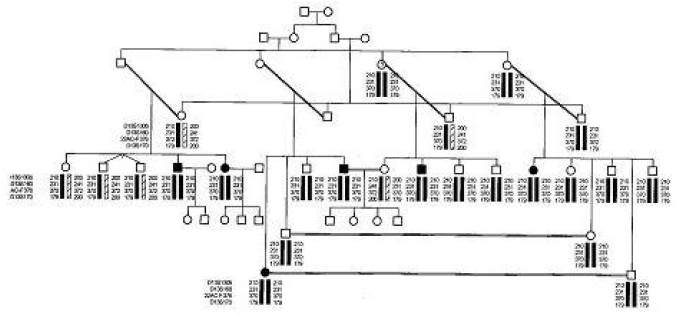No CrossRef data available.
Article contents
891 – Consanguinity Multiplex And Schizophrenia - The Royal Road To Genes Of Major Effect
Published online by Cambridge University Press: 15 April 2020
Abstract
Multi-factorial aetiology of schizophrenia has an undeniably large genetic component. Attempts to elucidate its genetics with large case control studies have met with limited success and other approaches are warranted.
In an extended family (pedigree 1) in which two sets of siblings - children of a brother and sister - are intermarried; six members with DSM-IV schizophrenia share a 6MB region of homozygosity on chromosome 13q. One out of twelve genes at this locus shows a sequence change in its promoter region.
[Pedigree 1]

Another family (pedigree 2) with two affected brothers has revealed two loci of homozygosity on chromosomes 5 and 9.
[Pedigree 2]

A third family with nine cases of psychosis is being investigated.
An approach which focuses on families with multiple cases in one generation and evidence of consanguinity in parents may be particularly successful for identifying recessive genes.
- Type
- Abstract
- Information
- European Psychiatry , Volume 28 , Issue S1: Abstracts of the 21th European Congress of Psychiatry , 2013 , 28-E344
- Copyright
- Copyright © European Psychiatric Association 2013



Comments
No Comments have been published for this article.